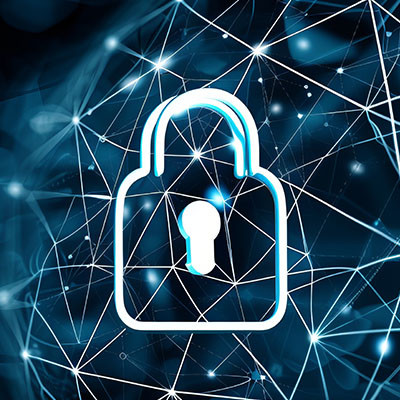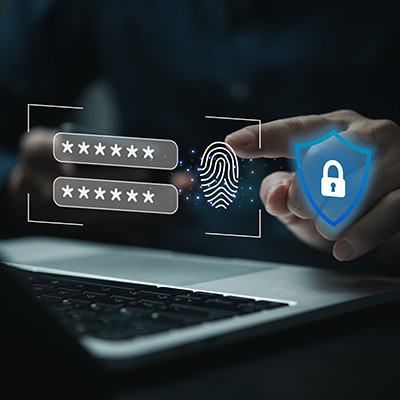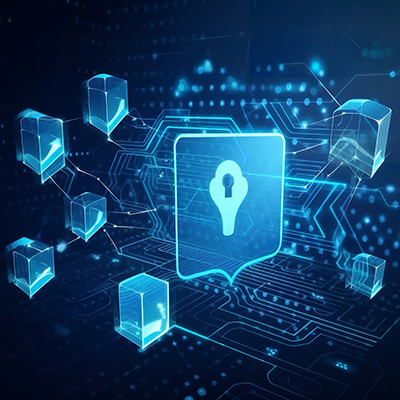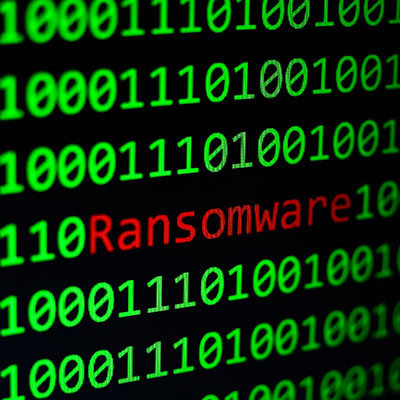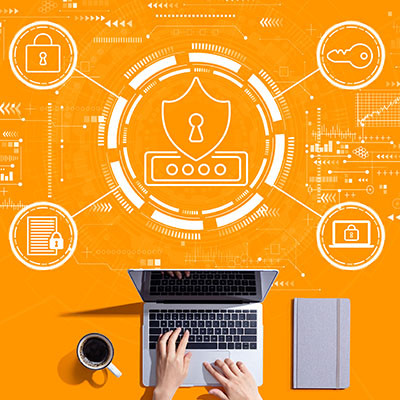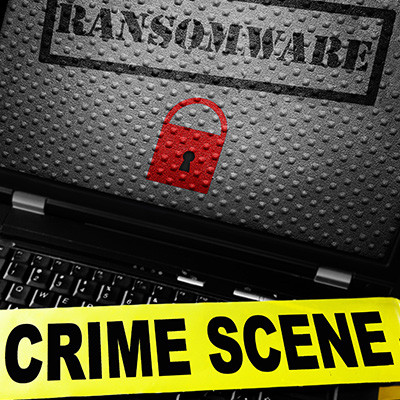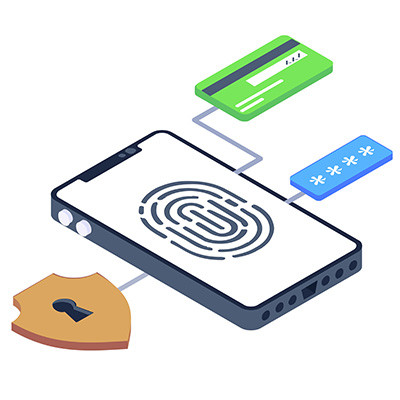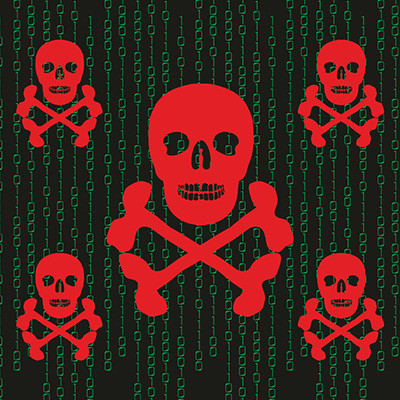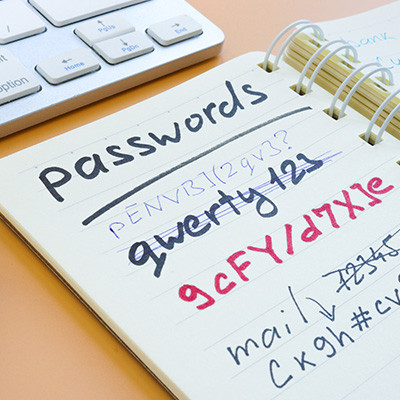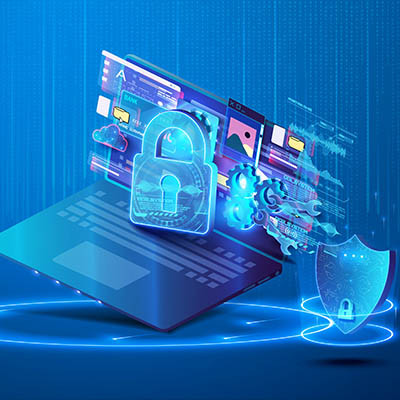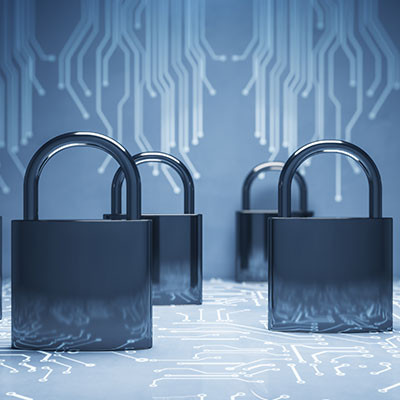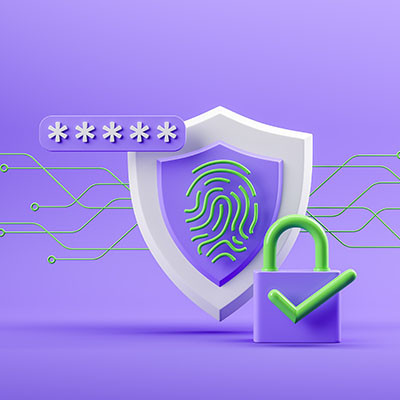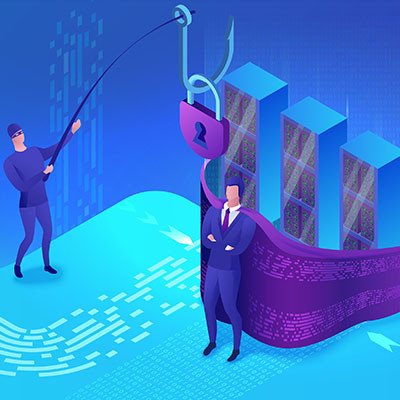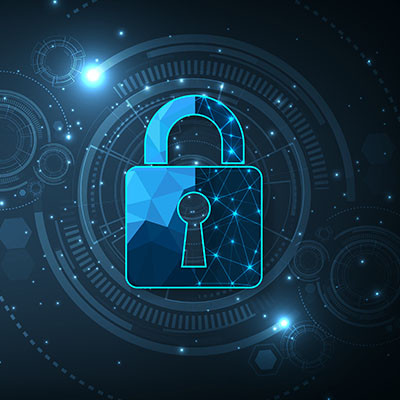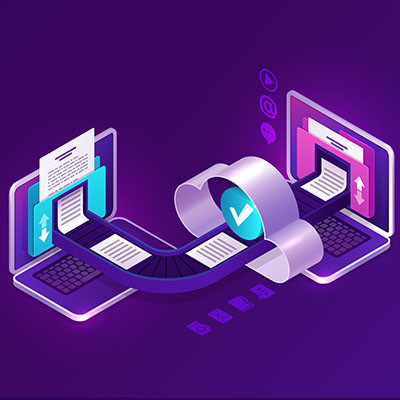k_Street Consulting, LLC Blog
Imagine giving every single person you work with a key to your house. Would you do it? Probably not, right? What if someone lost their key or had it stolen? You wouldn’t want to take that risk.
So, it stands to reason that if you can’t trust the people you work with every day with a key to your house, you wouldn’t want them to have access to all of your data; or your business’.
Every business relies on technology to function. Some wouldn’t be able to deliver any value to their customers without it, while others would be severely hindered if they suffered a data breach. For this reason, cybersecurity has to be a priority. In today’s blog, we will discuss five issues that business owners run into that can muddle their cybersecurity efforts.
Businesses of every size need to prioritize their security. This fact has not changed and will not change anytime soon. What has changed, however, are the recommended ways to approach this security.
Today, we wanted to review the history of today’s predominant cybersecurity advice and explore how the zero-trust security model applies.
Collaboration is as important as ever, if not more so, to businesses of any size… and with so much work today being done digitally, this collaboration needs to be reliable. Add in the fact that so many people work remotely as often as they do, and it should be clear that all businesses need a means of securely collaborating as part of their successful operations.
Can you tell the difference between your colleagues and a scammer with access to their email account? This is essentially what a business email compromise attack involves—a scammer initiates a phishing scheme using an internal mode of communication. These scams are also observed in schools, making them dangerous in the education sector.
Would you feel safe staying at a hotel that, instead of unique locks, each door used the same key as all of the others? Probably not—because if someone got in, they could take whatever they wanted. That’s similar to how old-school cybersecurity worked. Once someone got into a company’s network, they could access almost everything, making it easy for hackers to steal information. But today, many businesses use a better security framework called zero-trust security. In today’s blog, we discuss what zero-trust security is and why it’s safer.
"I don’t need to worry about cybersecurity… my business is too small for hackers to target."
This is one of the most dangerous misconceptions a small business can have. If you believe this, you may not fully understand how modern cyberattacks work. Let’s break down why this mindset can leave your business vulnerable.
If there’s one thing that helps businesses establish consistent policies and strategy, it’s a good framework. You can use a framework for anything, including network security. Today, we want to walk you through the cybersecurity protection standards as they are outlined by the National Institute of Standards and Technology so you can better protect your business.
Cybersecurity has to be a big deal for any business that uses IT, and today, who doesn’t? When your employees don’t follow cybersecurity rules, it can put your business in danger, like getting hacked or losing money. The first step is to figure out why employees aren’t following the rules. This could happen because they don’t know the rules, haven’t been trained enough, or think the rules are too hard or take too much time.
Over the past few years, huge scamming operations have operated in Southeast Asia, and now they are spreading. These scams—known as pig butchering scams—cause serious harm, as in an estimated $75 billion worldwide in 2023.
With these sorts of operations spreading, let’s go over what pig butchering is.
Funerals are never to be taken lightly, which makes it all the worse that there are people out there willing to use these events to scam those in grief. Recently, Facebook has seen many groups that supposedly offer links to streamed funerals in exchange for credit card data, with different events being added more recently.
Protecting your business’ accounts is something we will advocate for on repeat. You’ll hear us tell you about complex and unique passwords and multi-factor authentication until you’re sick of hearing it. But one tool that our clients sometimes forget is the password manager—an equally useful tool that can help your business keep passwords safe and secure.
Sorry for the loaded title. There’s a lot to talk about, even for those of you who don’t use or even know what Telegram is.
We’ll try to sum this up, because we think there is a lot to say about security and the nature of technology in this, and like all things these days, there’s some odd rabble-rousing about this whole series of events. Who’s up for a wild ride?
You should always use strong passwords for each and every account. Cybercriminals don’t need to put much effort into cracking a password these days—it only takes a little software and standard computer hardware to crack millions of passwords in just a second or two.
The more complex and random a password is, the more secure it is.
But coming up with (and memorizing) complex passwords is really difficult. This trick should make it a whole lot easier.
Potential data breaches are increasingly problematic for organizations, and the most common way that data is stolen is through phishing attacks. Phishing attacks are currently one of the most pervasive threats on the Internet, and you need to understand them to thwart their effectiveness against your users. Let’s explore what exactly a phishing attack consists of and some best practices you can use to defend your network against them.
Facebook remains one of the most visited places on the Internet. Meta (the parent company to Facebook) also features WhatsApp and Instagram on their roster and has faced numerous security and privacy failings over the years. In this week’s blog, we’ll take a brief look at some of the most noteworthy.
A popular automotive dealership software platform has recently become the target of a cyberattack, resulting in the solution going down for several days. Any business that has a solution it relies on can sympathize with the situation. After all, if you lose access to your critical business apps for several days, would your operations be able to recover?
All businesses use email to communicate, but too many organizations haven’t jumped on the encrypted email bandwagon yet. Encryption is incredibly helpful to keep networks and infrastructure secure, and it can do the same for your email solution. In fact, it is likely required to ensure the secure transfer of critical and sensitive information.
Encryption is a powerful weapon against hackers that can prevent them from stealing your data and leveraging it against you. Encryption, in its most basic textbook definition, converts your readable data into an indecipherable jumble that can only be reassembled through the use of an encryption key. Small businesses absolutely must utilize encryption to protect customer information, financial records, and other important or sensitive business data. This ensures that it is as protected as possible against those that might do you harm.
Hackers are always on the lookout for personally identifiable information, or PII, as it’s an immensely lucrative resource. You’ll need to protect it if you want your business to continue operating safely and efficiently. Let’s go over what PII entails and what kinds of data you might find under this term.
Safeguarding your online accounts is an important part of maintaining network security. With the increasing number of cyber threats, relying on strong, unique passwords is no longer optional—it's a necessity. Remembering complex passwords for numerous accounts can be challenging, however. This is where password managers come in handy, offering a secure and convenient solution to managing your credentials.
Phishing is a pervasive threat nowadays, with businesses of any size or industry serving as prime targets. Understanding phishing and implementing effective prevention strategies is crucial for your entire team.
Let's explore how to reduce the effectiveness of phishing schemes against your business—in other words, how to prevent phishing from having an impact.
While the word “audit” can easily be a scary thought for businesses, there are certain cases where an audit serves an organization’s direct benefit. Take, for instance, the ones that occur internally to identify and correct security issues and vulnerabilities. These audits are not only a positive endeavor for businesses; they’re extremely important to carry out.
Let’s talk about why this is and review a few standard practices you should prioritize as you go about this process.
Like many of the past few years, this year has witnessed a significant surge in high-profile ransomware attacks. If you haven't already strategized how to safeguard your business from these threats, now is the time to act. Fortunately, you can take several proactive measures to mitigate the impact of ransomware attacks, and it all starts with preparation.
Believe it or not, if you were to rank your business’ greatest threats, risk factors, and vulnerabilities, your users would most likely belong somewhere toward the top. Human error is a big challenge to your security simply because cybercriminals understand that your employees are, in fact, human and will, in fact, make mistakes.
Let’s explore how cyberattacks exploit this tendency and how you can better protect your business from the ramifications.
Cybersecurity is crucial for everyone to focus on, both in the professional environment and in their personal lives. That’s why I wanted to put together a list of cybersecurity practices you should encourage your team to follow when they aren’t in the office or working remotely, when their time is theirs.
All it takes is one oversight to potentially undo any benefits your cybersecurity protections and other best practices may deliver. For instance, even if you have things like multifactor authentication in place, a phishing scam or even some malware varieties could potentially give an attacker access to your email… and all the data your messages contain, just sitting in your inbox.
Nowadays, it is crucial that you make security a top priority. With the right approach, it not only saves you massive headaches, but also a considerable amount of capital—particularly if you leverage the appropriate solutions for SMBs. As a managed service provider, we can ensure that you implement the appropriate IT solutions to maximize the return on your security investment.
Network security is complicated, and as such, you need to have considerable knowledge of it to ensure that your business is as secure as possible against the plethora of threats out there. Thankfully, you don’t have to do it alone. We want to give you some insight into the dos and don’ts of network security.
Small and medium-sized businesses largely rely on their standing amongst their audience, which means their reputations are critically important to preserve. Unsurprisingly, one of the fastest ways to damage—if not eliminate—their reputation amongst the public is to suffer a cybersecurity event. Let’s examine some statistics, and consider what you need to do to keep your business from becoming one.
Technology and digital tools are a hot topic on our blog, but where there is technology, there is also data… and where there is data, there will be hackers trying to steal it. Data breaches are a common thread in all industries, and to prove this, we have put together six of the most notable data breaches from 2023. We hope you can learn a thing or two from them!
In this blog, we continuously try to caution individuals against clicking on suspicious links, but distinguishing between a genuine URL and a questionable one has become increasingly challenging. Malicious tactics have evolved, making it imperative for everyone to remain vigilant. These threats are pervasive, coming from various directions. This discussion will focus on a single punctuation mark that can help determine whether a link is genuinely safe or potentially perilous.
Ensuring the security of your data is extremely important. If you are a frequent reader of this blog, you know that any unauthorized access to sensitive information can result in severe consequences for your business. The problem is that today’s cybercriminal tactics have become increasingly sophisticated, posing a constant challenge to organizational data security. Today, we look at six things you can do to keep your data secure.
Every organization needs to have a certain level of cybersecurity protection in place. That includes firewalls, antivirus, VPNs, encryption, and centrally managed security policies. Even so, many modern cybercriminals know that businesses have these protections in place, and they are working out ways around them.
Email is complex, despite all appearances. It’s easy to overlook its complexities when you log into your account and it just works. However, you’ll need to ensure that your email is managed properly, as well as secured with protective measures for the underlying technology. Let’s go over some of the more effective methods you can use to keep your infrastructure secure from all types of threats, whether they are visible or hidden.
The State of Maine in the United States has been the victim of a cyberattack.
That’s right, the whole state was hacked by a Russian hacking collective.
The state claims that over 1.3 million people’s personal information was compromised via an already known vulnerability in secure transfer service MOVEit Transfer. Unfortunately for the people of Maine, this vulnerability is known to be used by the Cl0p ransomware gang, based out of Russia.
You might think that adding additional security measures can only benefit your business, and this is true in most circumstances, save one: security exhaustion. If you don’t make it easy for your employees to adhere to your security policies, then you could inadvertently be making them perform slower than usual and your solutions could be getting in the way of their work.
Back in July, the White House secured commitments from Amazon, Anthropic, Google, Inflection, Meta, Microsoft, and OpenAI to help manage the risks that artificial intelligence potentially poses. More recently, eight more companies—Adobe, Cohere, IBM, Nvidia, Palantir, Salesforce, Scale AI, and Stability—also pledged to maintain “the development of safe, secure, and trustworthy AI,” as a White House brief reported.
It’s an unfortunate fact that cybercriminals are motivated to attack places that contain large volumes of sensitive data, but typically lack the budget or in-house skills to sufficiently protect it. It’s even more unfortunate that this description directly applies to many schools and school systems.
Let’s talk about what schools have to offer cybercriminals, and what they need to do as a result.
It’s borderline impossible to conduct any business online without seeing potential threats abound. It also doesn’t help that threats tend to disguise themselves to avoid being detected. Today, we want to share a social media threat that one of our employees discovered while going about their day, and we think even a cautious user could have been fooled by it.
The cloud is an amazing tool for just about any business, allowing for countless benefits that span endless possibilities. However, because it involves the Internet and hosting data in an online environment, there are security challenges that naturally come about as a result of utilizing it. Let’s consider some of the security mistakes that businesses can experience while using the cloud.
For today’s business, there are very few threats that are as pervasive as cyberthreats. For this reason organizations that are willing to invest in their cybersecurity seem to have more control over their data and operations. With cyberthreats constantly evolving and becoming more sophisticated, it is crucial to equip ourselves with the right tools to protect our digital assets. In this week’s blog post, we will explore some of the most important cybersecurity tools that every individual and organization should consider implementing.
Viruses and malware are bad. Ransomware is crippling. Data breaches in some cases can more or less shut down a business. We talk about these threats all the time, but for most people, they are just scary-sounding buzzwords. Today, we want to talk about the more personalized threats that are much more cunning, and in some ways, much more dangerous.
Phishing attacks are the most common attack vector used by hackers, and while it helps to know what a phishing attack looks like, it’s also good to know what they don’t look like. The latest example of a phishing attack takes this to an extreme, utilizing blank messages to confuse recipients in a creative take on phishing attacks.
If you have never imagined your business in the crosshairs of enemy hackers, you could be in for a rude awakening. Unauthorized access to important business data could be enough to bring your business’ operations grinding to a halt, among other consequences. You need to focus your efforts on security, including protecting your infrastructure and ensuring its redundancy through data backup systems.
Many web browsers, like Google Chrome, have features that allow for convenient password-keeping, but at the cost of considerable cybersecurity risks. We recommend that all businesses utilize a password management tool, but preferably not one that is built into a web browser. Why? We’re glad you asked!
As time goes on, businesses are doing more and more to protect their digital assets from theft and corruption. Whether that is deploying tools, providing training, or getting the support you need to successfully secure your business from the myriad of threats coming your way, you need to be deliberate about the way you go about deploying your security resources. Today, we want to touch on security training and the role it plays in your cybersecurity.
Phishing attacks are one of the most common security threats to your business, not only because they are effective, but because they can be utilized in many different ways. You can become the victim of a phishing attack through email, instant message, phone, or even your voicemail. These “phoicemail” attacks are quite crafty in their approach, and you should be wary of them.
At the end of January, the Federal Bureau of Investigation went public with an announcement that they had taken down the servers and Dark Web sites utilized by the Hive ransomware gang. This is a major victory, in terms of fighting cybercrime, but a certain statistic from this operation shows a somewhat disconcerting trend.
Passwords, as annoying as they are sometimes, are the front line of defense to almost every account and profile your business depends on. That doesn’t stop security professionals from trying to develop better strategies to secure digital systems. Some of the biggest names in tech are searching for ways to forge ahead passwordless. Let’s take a look at one example that has drawn the attention of the tech community.
Artificial intelligence and machine learning are entering the mainstream technology discourse, and with software developing the ability to learn from datasets, many businesses are using this technology to automate their processes to cut down on costs and better use their current resources. There is a lot of good that comes from this, but only when you look past these benefits can you start to see the drawbacks, including an important one called “data poisoning.”
Despite not wanting to think about cybersecurity incidents derailing your operations, it’s important nevertheless to consider them before it’s too late to do anything about them. These days, businesses need to invest considerable capital into protections, including a cyber insurance policy to cover all of their bases.
Let’s discuss some of your options for cybersecurity insurance and what you’ll need to know to make the most informed decisions possible.
For quite a while it took an actual disaster to encourage business leaders to allocate any time and money to put towards cybersecurity. Many businesses still don’t, in fact. Those that have, while absolutely prudent in their use of resources to help ward off security problems, may forget that there are still things that need to be done aside from employee training to keep their security up. Let’s go through a few things that every organization should be doing to maintain the security of their information systems.
Cybersecurity is one part of your business’ computing that you must prioritize, as the fallout of a data breach could, in many cases, be enough to shutter your business for good. You want to be seen as a company that takes data security seriously, and to this end, you have likely implemented countless security features and measures to protect your organization’s resources and data. However, this all comes at a cost, and it’s not the one you might expect: your employees.
Passwords used to be the law of the land, but in a world where passwords are more at risk of threats than ever before, people have turned to passwordless solutions. In fact, one of the biggest tech companies out there—Google—recently took steps toward passwordless authentication which we think is pretty darn important.
For the most part, Microsoft takes security as seriously as it should, issuing updates and patches to maintain your Windows and Server operating systems. While you can count on receiving these updates for your supported operating systems, what you might not have known is that Microsoft accidentally overlooked a flaw in its own defenses.
When it comes to your network and its security, you cannot give all of your users access to all of your assets. It’s just not a good practice, and doing so can potentially put your resources at risk. Let’s discuss how network segmentation can make a world of difference for the integrity of your network and the data found on it.
In the technology news sector, you’ve probably noticed a trend where Patch Tuesday makes headlines at least once a month. This is generally the day when Microsoft issues patches and security updates for its many different technologies, and it’s important for your IT department to know when Patch Tuesday falls each month.
It can be too easy to think about hackers and cybercriminals in an almost abstract way, diminishing them to little more than a faceless entity at a keyboard. Naturally, this is far from the truth. Let’s examine the reality of the cybercrime industry, which actually does as much harm to the perpetrators as it does to the people they scam...if not more.
Business owners often get unsolicited emails from individuals who want to sell them goods, services, or products. Depending on the message, they might even come across as a bit suspicious, prompting you to question the authenticity of the email. If you’re not careful, you might accidentally expose your organization by clicking on the wrong link in the wrong email, thus falling victim to the oldest trick in the book: the phishing attack.
Smartphones have managed to hold out against ransomware a bit longer than other hardware and operating systems, but those days are coming to an end. It’s important to remember that the average smartphone is not protected with antivirus software and thus remains threatened by your standard ransomware attacks. It is absolutely critical that your business doubles down on its protection against ransomware, especially in the mobile market.
Social engineering is a dangerous threat that could derail even the most prepared business. Even if you implement the best security solutions on the market, they mean nothing if a cybercriminal tricks you into acting impulsively. Let’s go over specific methods of social engineering that hackers might use to trick you.
With so many workers constantly connected to screens and other technology, it is a good idea to disconnect every so often by taking a vacation somewhere. However, it’s not always this easy, especially for a business owner who is still minimally connected to the office even while technically on vacation. We’ve got a couple of tips for how you can make the most of your technology while on your vacation without putting your company at risk in the process.
Sometimes it can be easy to take cybersecurity for granted, especially when you consider that built-in security features are more powerful than they have ever been. Unfortunately, if you think that cybersecurity is something that ends with the built-in security of your desktops and laptops, then you’re in for a rude awakening.
Hacking attacks can be stressful to manage, but when you add in that they can strike when you least expect them to, it gets a lot worse. You’ll never know how you respond to such an event unless you simulate it and replicate it somehow. This is what the penetration test is used for; it provides your business with a way to prepare for cyberattacks.
Botnets are nefarious entities consisting of countless connected devices, all of which have been infected by hackers to perform malicious deeds. One such botnet, a Russian botnet consisting of millions of infected Internet of Things devices, has been dismantled and taken down by the United States Department of Justice and various law enforcement agencies throughout Germany, the United Kingdom, and the Netherlands.
Cyberattacks have caused many millions of dollars worth of damage to businesses over the past several years, so it makes sense that your business should invest in its cybersecurity to mitigate these damages. That said, there is only so much you can invest into your cybersecurity budget, as you have to factor in other parts of your business, too. Today, we want to share with you three ways you can invest in cybersecurity initiatives that won’t completely break your bank.
How many devices or points of access do you have for your business’ data infrastructure? Chances are it’s more than you think, at least at first glance. If you count up all the mobile devices, server units, workstations, laptops, and so on that have access to your network, you might suddenly realize how important it is to secure all of these endpoints, as any unsecured device could be a path forward for hackers.
Cybersecurity is something that must be reinforced both in the office and out of the office for your remote employees, and it’s unfortunately quite difficult to maintain. Let’s take a look at the unique circumstances surrounding the remote worker and how you should reinforce security best practices for them, even if they are not physically present in the workplace.
If you aren’t making cybersecurity a priority for your business, then we urge you to review the following statistics to ensure that you understand the gravity of the consequences. Let’s take a look at some of the ways scammers and hackers are making their way around the carefully-laid defenses placed by businesses and how you can protect your own organization.
There are times when you, as a business owner, might receive unsolicited emails from organizations asking you to try a product or asking for your input on something. More likely than not, the one responsible used data scraping to get your contact information. If it’s used appropriately, data scraping can be an effective marketing tool, but it can also be utilized by scammers to make your life miserable.
Businesses largely rely on their information systems and other technology tools, so you need to make sure they stay secure and far from the many threats out there. To this end, we recommend that you implement security systems that prioritize business continuity and data security. Let’s examine three ways you can keep your business’ IT safe and secure.
With Google Chrome being one of the most popular web browsers out there, it’s no surprise that threats want to target it and take advantage of its users. However, up until recently, there have not been very many zero-day threats associated with Chrome. Zero-day threats are attacks that have never been seen before, affecting a new and previously unknown vulnerability. We want to remind you that it’s not always a bad thing when vulnerabilities are discovered in a browser or web application—in fact, it can actually be indicative of good monitoring practices.
Cybersecurity is incredibly important for any organization that requires IT to remain operational (basically all of them), so it’s time to start thinking about your own strategies and how you can keep threats out of your network. One viable solution your business can implement is a Security Operations Center (SOC). What is a SOC, and how can you use it to keep threats off your network?






































